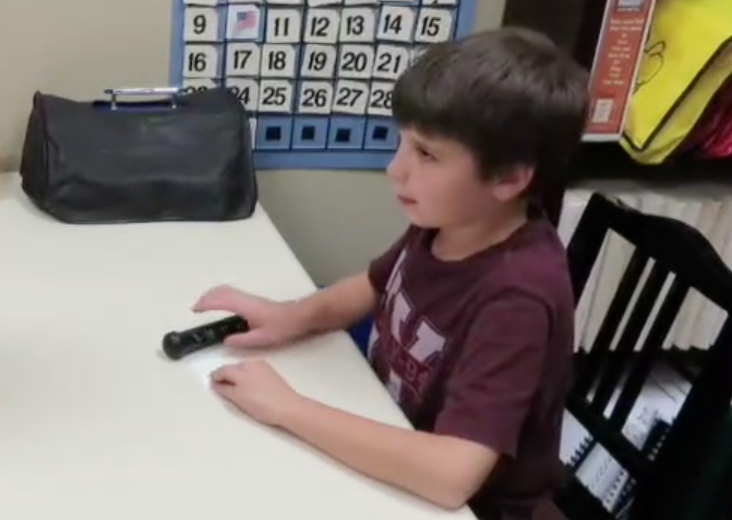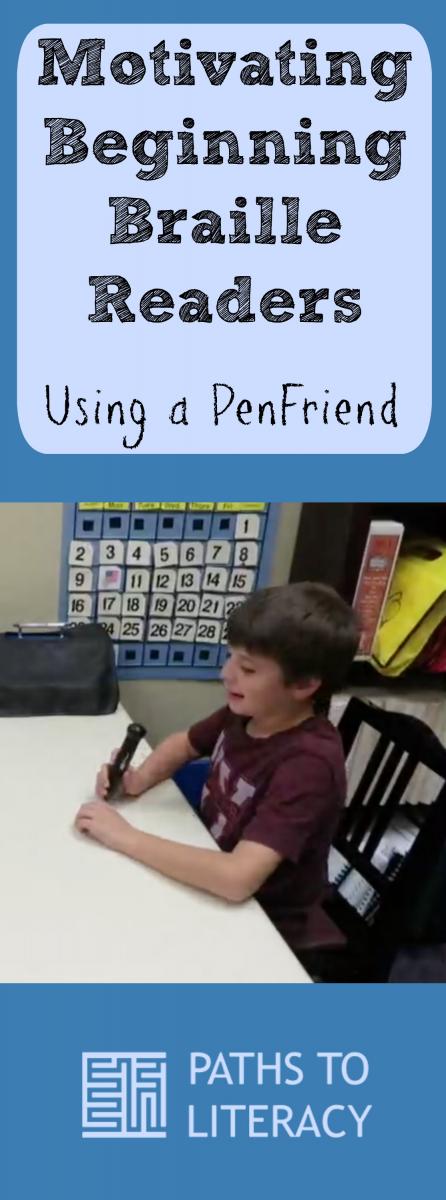Using PenFriend to Make (Formerly) Boring Flash Cards More Fun
Submitted by Candy Lien on Nov 26, 2016

To make flash cards that are more interesting and motivating, I like to use the technology of the PenFriend to add an audio component. This activity provides fun practice for beginning braille learners.
Materials:
- Permabraille sheets from APH, which make very durable, crisp, easy-to-read braille dots.
- 3” x 5” cards: I cut the 3” x 5” cards in half for word cards, and I use the whole 3” x 5” or 4” x 6” cards for sentence cards. I snip off the upper right-hand corner of each card for orientation.
- PenFriend is made by RNIB (in the UK) and is available through them or through Independent Living Aids or Maxi-Aids in the United States
- Braillewriter
Procedure:
- The cards can be loaded into the Perkins brailler to write on.
- I place a Pen Friend sticker near the bottom of each card with my voice reading the letter, sign, or sentence.
- The student reads the card and checks his/her answer using the Pen Friend. Students enjoy recording their own voices on the Pen Friend labels too.
- I make sentence cards to supplement the material found in the Kindergarten Level of “Building on Patterns” by APH.
- Students can make their own sentence cards as well for even more practice.

